Posted by steve dean on 17/07/2017 22:56:12:
Thanks dodgy. I understand my questions may be tedious and my knowledge lacking in this field……
Not tedious – we're happy to answer any point. It's just that it's very hard to learn about a whole new field by asking individual questions. All I meant to convey was that you need a thorough grounding in the topic, and if we depend on you asking questions it could be easy to miss something out….
Carpentry is, of course, a very noble profession, and one which is sadly becoming less common as people tend to buy 'Ready-to-Run' models nowadays. I try to encourage it with a few web sites intended for beginner modellers – this one, for instance **LINK** . Your grandkids might be interested in making a boat from the plans on the site with your help. But I don't say much about radios there, and most introductions to R/C assume that you know something about the equipment already. Let's try a short beginners intro…
For model radio control you first need a Transmitter (Tx) and a Receiver (Rx). These are often sold together as a 'combo'. The Tx will usually have either sticks or a wheel on it, and when you move these controls a signal is sent to the Rx. Depending on the number of sticks/wheels/switches on the Tx, you can send a number of different 'signals' to the Rx. For boats and cars the minimum number of 'signals' (often called functions or channels) is 2 – to control steering and speed. Aircraft need a minimum of 4 channels for full control, and they usually get this by having two joysticks which can each be pushed to the left-right (one function) and up-down (the second function).
Technology changes! Once upon a time all modellers had Tx/Rx combos which used the 27Mhz radio frequency – as did many other users! If two people transmitted at the same time they would interfere with each other – and so would anyone else using 27Mhz. Gradually this improved, with modellers using 'spot' frequencies inside the 27Mhz band so that perhaps 6 people could use slightly different frequencies at once. These were indicated by colours – if you see a Tx box with a red pennant on the aerial you know it is transmitting on the red frequency, and you must use another one. Organising this is difficult at the poolside or flying ground – and people are not happy if you interfere with their controls and cause a crash!
After a while, modellers were given their own frequencies – 35Mhz for aircraft, and 40Mhz for boats. 27Mhz was still allowed. though there could be a lot of interference on that frequency. Then the development of computer Wi-Fi created a new frequency band – 2.5Ghz. This has a load of advantages – it's cheap, free of interference, and you don't need to worry about spot frequency allocation, which happens automatically. Unless there are overwhelming reasons for choosing another type, I strongly recommend that you go for a 2.4ghz Tx/Rx combo. 2-function will give you the minimum number of controls – if you want to include raising flags and other such features, go for more functions…
Right. Now we can send a signal to a remote model. But what will it do when it gets there? We need something to actually make the signal do something. These things, which could be called 'actuators' are little boxes which plug into the Rx and perform the function required. Let us think of an example boat, with a 4-function radio. Your TX is a box with 2 sticks on it, your Rx is a small box with 5 sockets in it, marked Ch1, Ch2, Ch3, Ch4 and Batt.
The first thing we will do is control the rudder. For this we use a 'servo' – a little box with a moving lever on top of it. Connect the lever to the rudder tiller, and plug the servo connector into Channel 1 on your Rx. Plug your small battery pack into the Batt socket. Turn on the Tx, and wiggle stick 1 left to right. The servo arm will move, and the rudder will turn.
Now we want to control the electric motor. For this we use an Electronic Speed Control (ESC). That's a little box with several wires coming out. Plug the control connector wire into the Rx, the Main Battery wire into the main battery, and the Motor wire into the motor. turn on the Tx and Rx as before, wiggle stick 2 up and down, and the motor will start, running fast and slow depending on how you move the stick. You have already got one of these.
That's enough to control a boat, but we have 2 more functions we can use, and our budget is not depleted yet! Perhaps we would like lights on our model boat? For this we use a Radio Control Switch – they're very cheap. It looks similar to an ESC – a small box with wires coming out. Plug its control wire into Rx Channel 3, and connect the output wire to the lights, then move stick 1 up and down. The lights go on and off!
Finally, perhaps we have a crane on the back of the boat, and we want to raise and lower the hook? For this we might use a Winch Servo? These are rather expensive, and are usually used for controlling the ropes on model yachts. It looks like a servo, but is usually bigger, and has a drum where the servo arm would be. We plug this into Rx Channel 4, and move stick 2 from side to side, which makes the drum turn…
From all this, you might gather that you have lots of options. Your basic need is a 2.4Ghz TX/Rx combo and a small servo to operate the rudder. You already have quite a nice ESC already wired to the motor. The further examples above should help you understand what people are talking about when things get a bit more complicated…
Edited By Dodgy Geezer


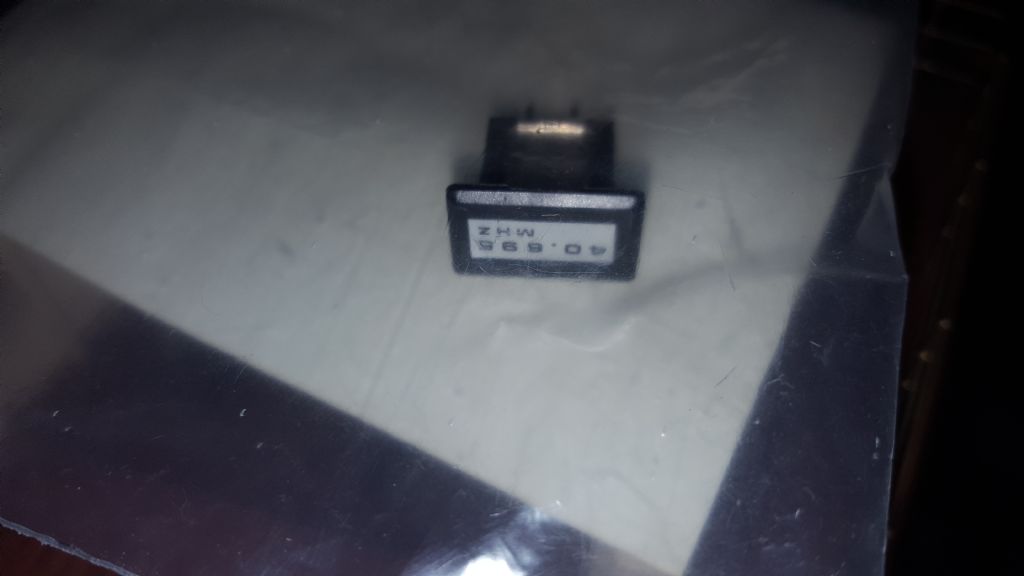
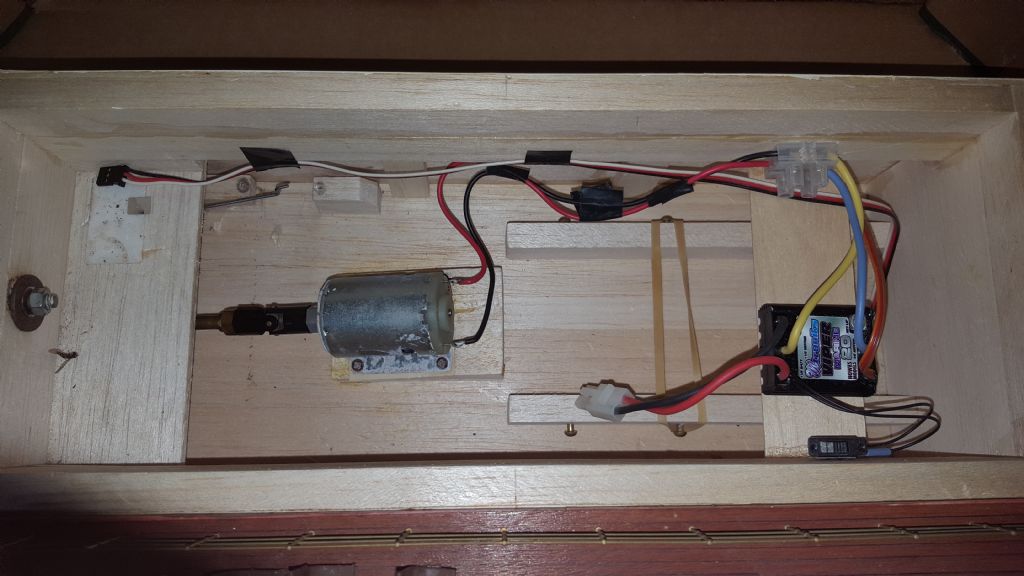
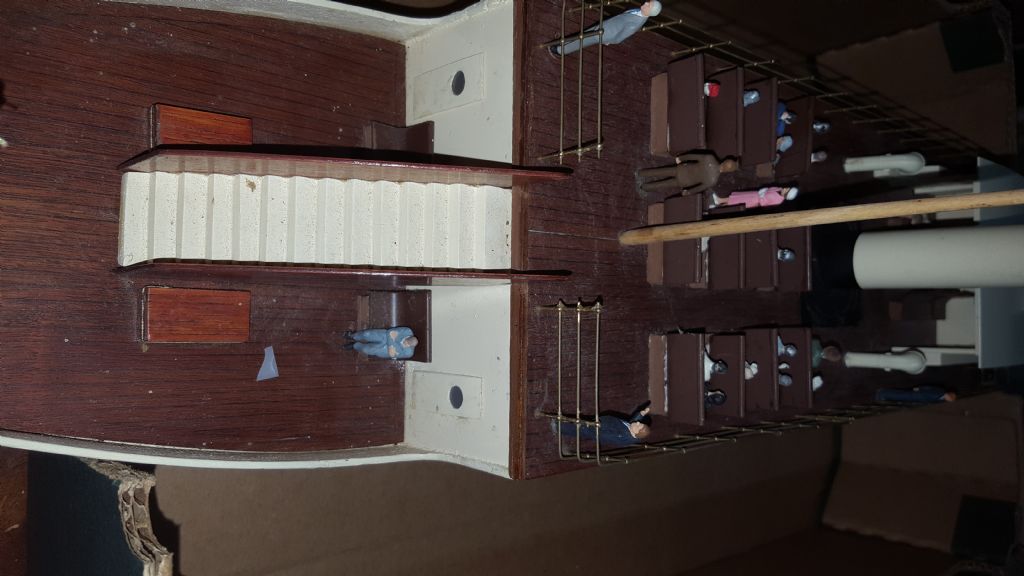
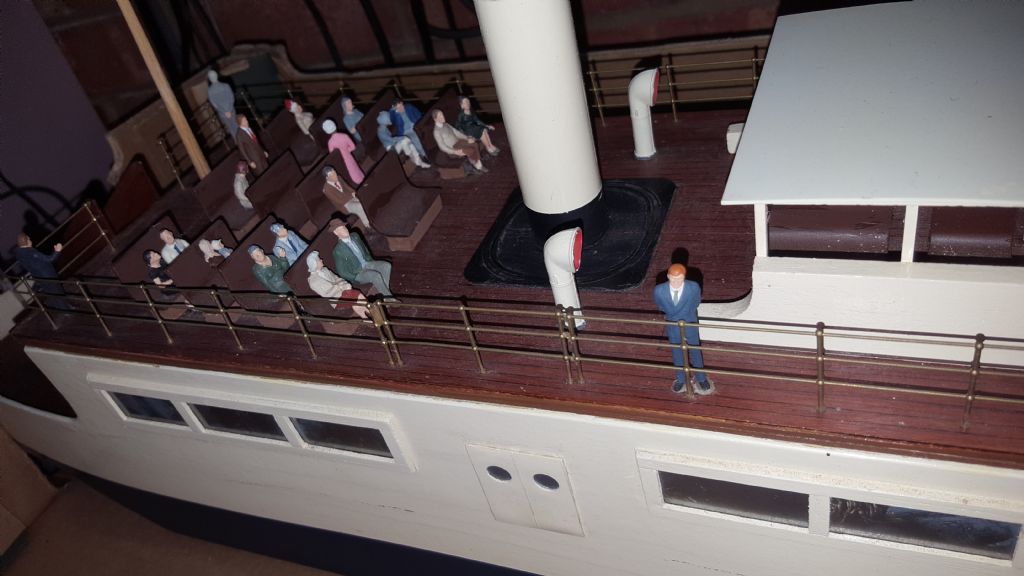
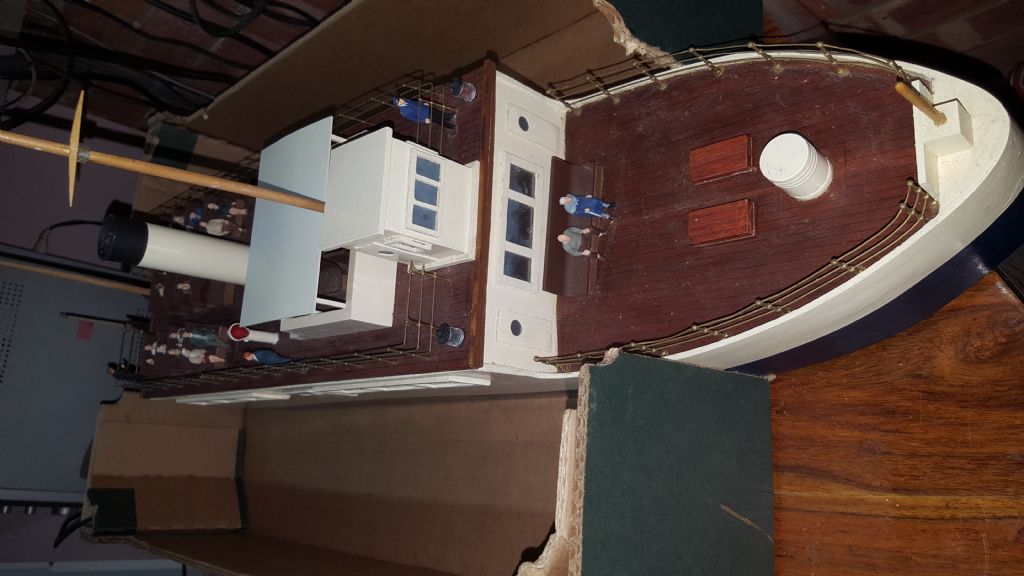

 cwAAOSw5cNYmerW
cwAAOSw5cNYmerW

